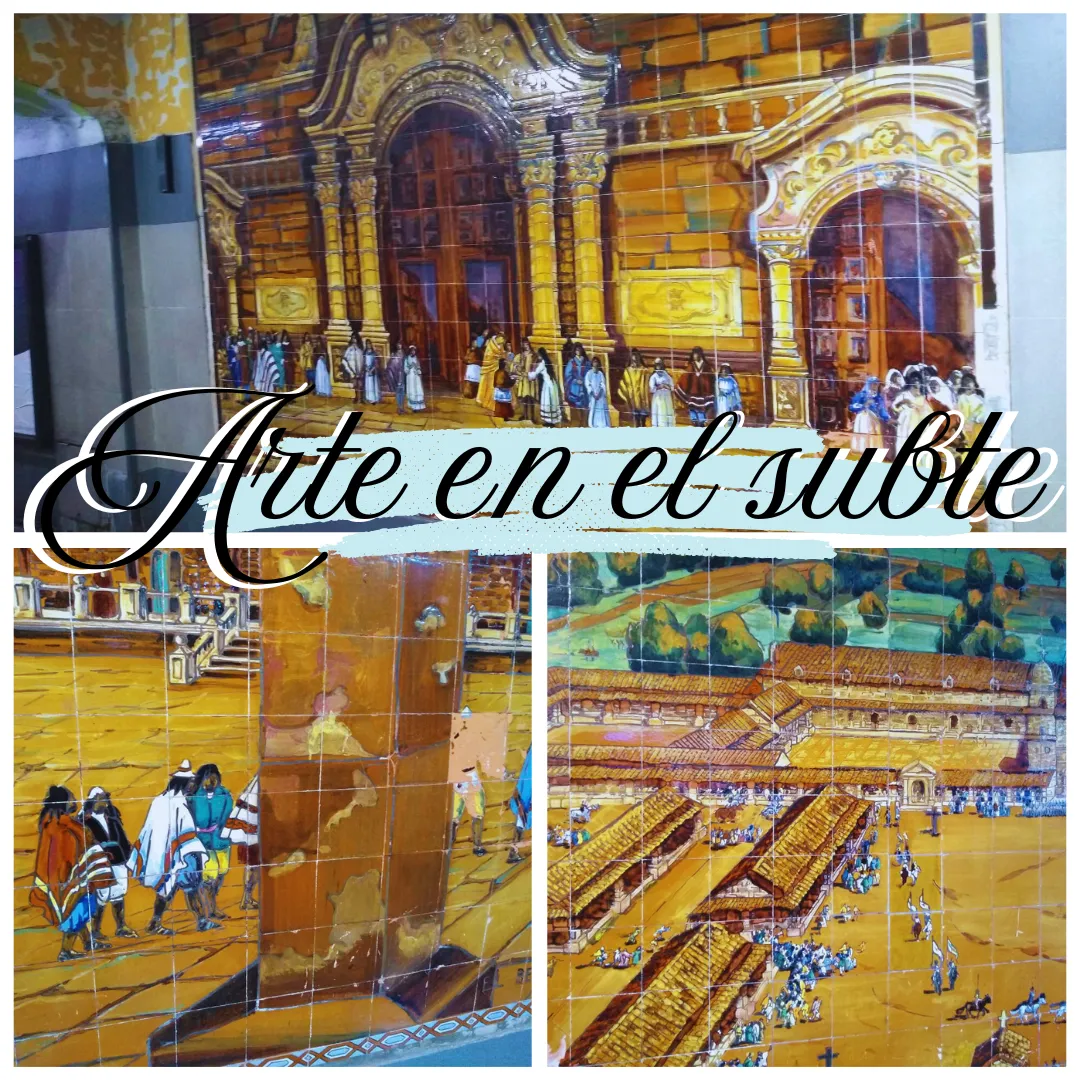
Las estaciones del subte en Buenos Aires son, además de funcionales, una especie de galería, pues en casi todas ellas podemos encontrar murales hechos con mosaicos, pinturas, esculturas, y alguna otra manifestación artística muy particular.
Probablemente, los usuarios de este medio de transporte no se toman el tiempo de detallarlos por la misma premura con la que se mueve el sistema, sin embargo, en mi caso, como pocas veces lo uso, cualquier novedad en sus andenes me resulta fascinante.
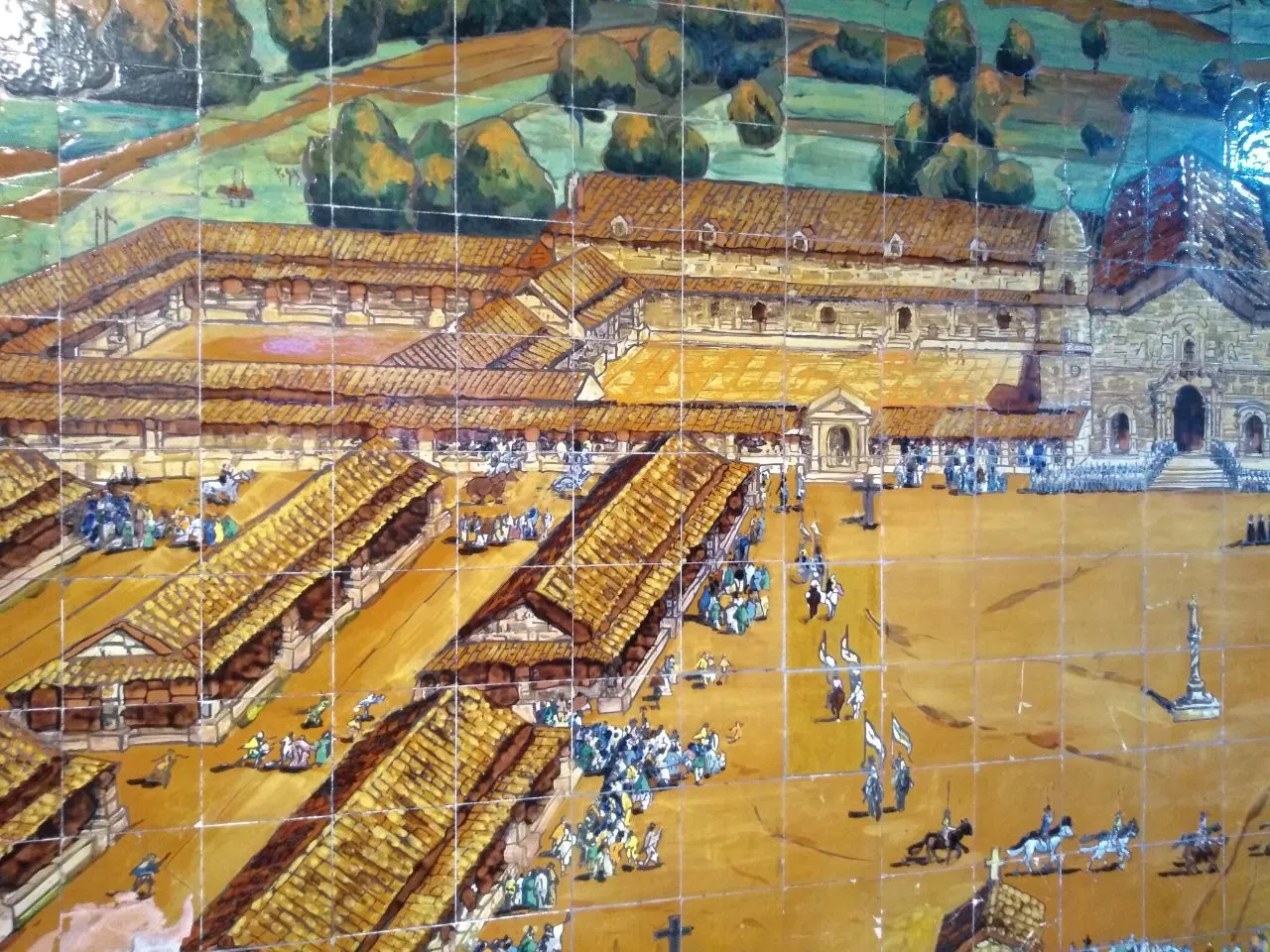
La estación llamada Plaza Italia, por la plaza que encontramos justo en la salida de ella, nos regala tres murales hechos en mosaicos, en los que se representan momentos históricos de la Argentina durante la época colonial.
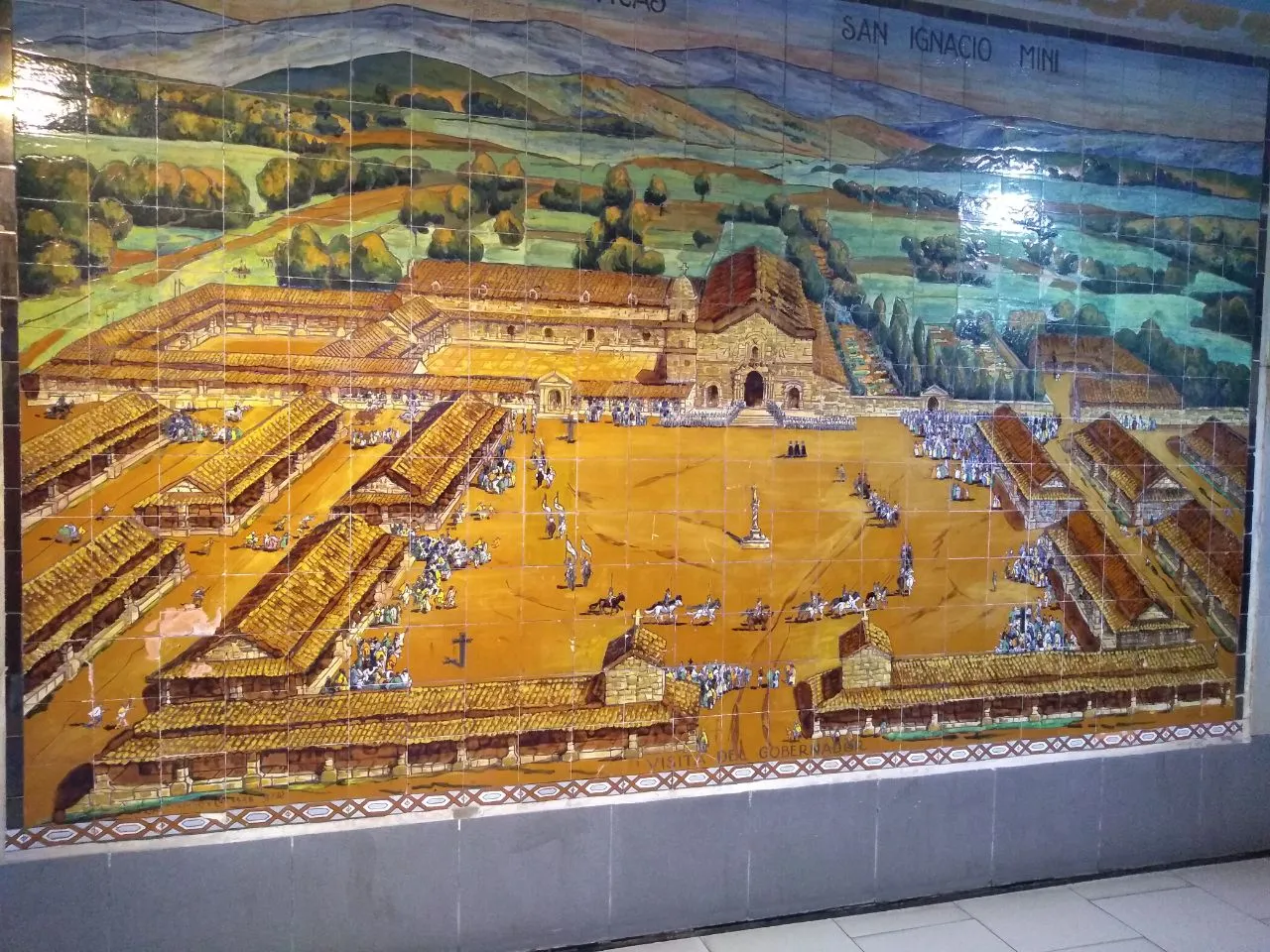
Debo reconocer, que el principio pensé que se trataba de un paisaje venezolano, ya que las construcciones en ambos países durante la época colonial eran muy similares.
Predominan los colores ocres, confundiendo la tierra con las edificaciones, que imagino eran hechas también con arcilla o adobe (una mezcla de tierra y arcilla) que se utilizaba mucho en las edificaciones venezolanas, inclusive hasta principios del siglo pasado, y que brindaban la misma durabilidad de los materiales actuales, aunque su proceso de elaboracion duraba mucho más que el de los bloques de cemento actuales.
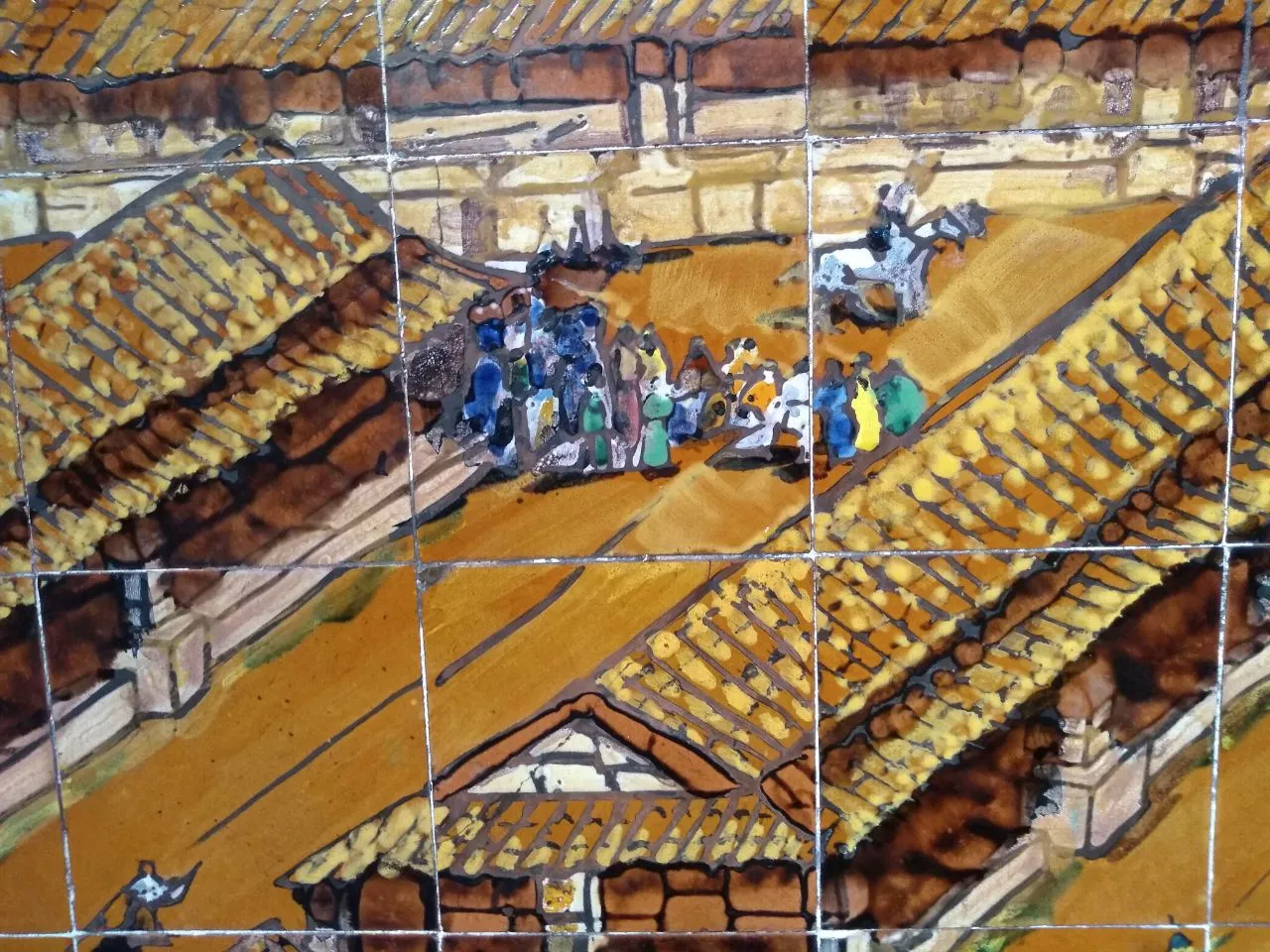
Largos pasillos en las 4 esquinas de cada casa, permitian las reuniones a la sombra de techos de dos aguas con tejas que hacian fresco el ambiente.
Las vestimentas propias de la época, nos remontan a esa realidad ahora tan lejana, pero que en su momento forjaron grandes personalidades, luego de tener que luchar para adaptarse al clima y a las condiciones políticas y sociales de esos años.

Uno de estos murales, representa un casamiento colectivo, que imagino era lo usual en aquellos años, mientras que otro es llamado la visita del gobernador y el tercero lleva por nombre el besamanos de el cacique.
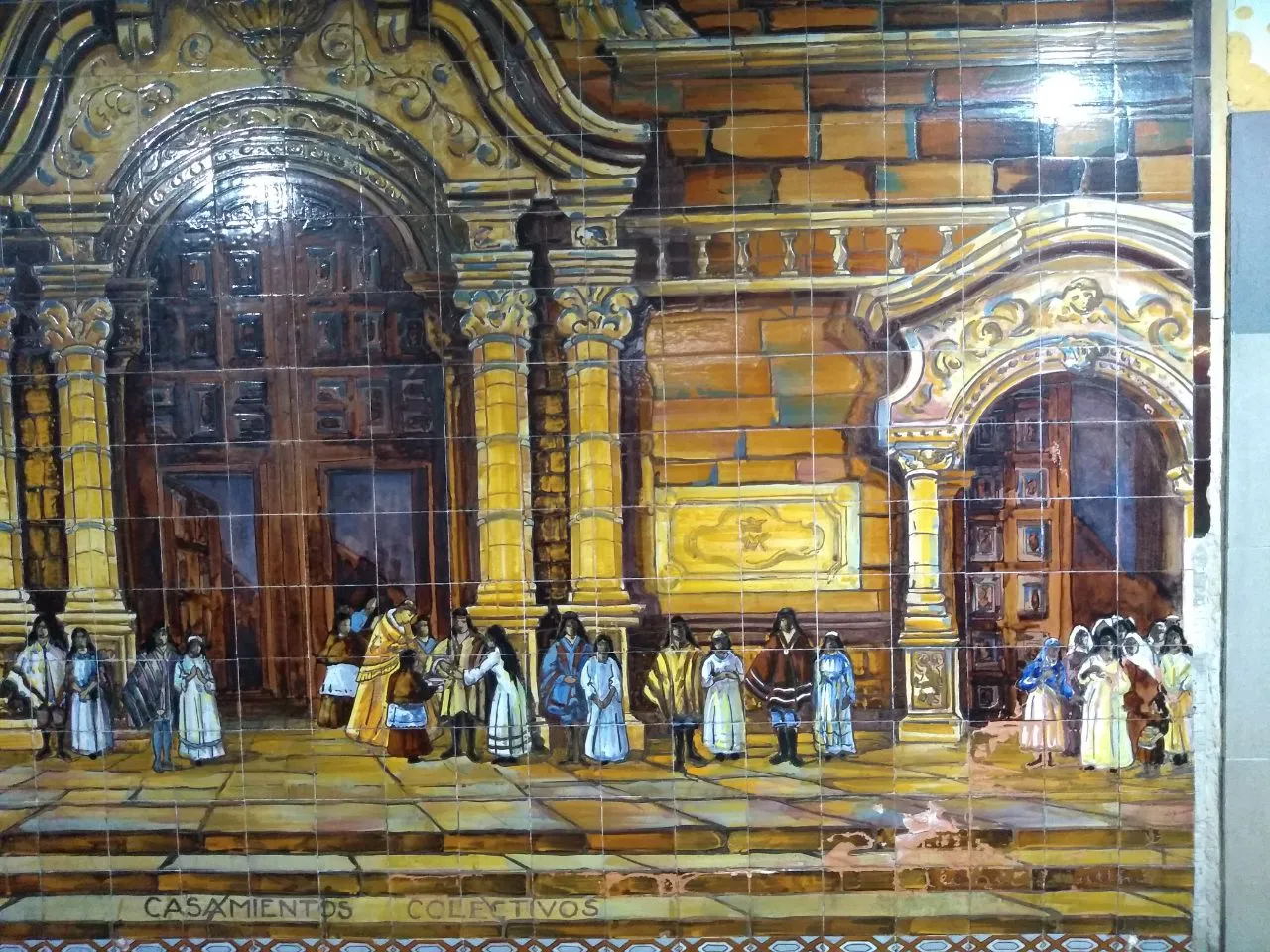
Lamentablemente, este último esta deteriorado en un costado, sin embargo de puede ver gran parte del diseño, en el que vemos algunos pobladores vistiendo los ponchos autóctonos hacen gala de los coloridos que suelen ser, además de las calles empedradas.
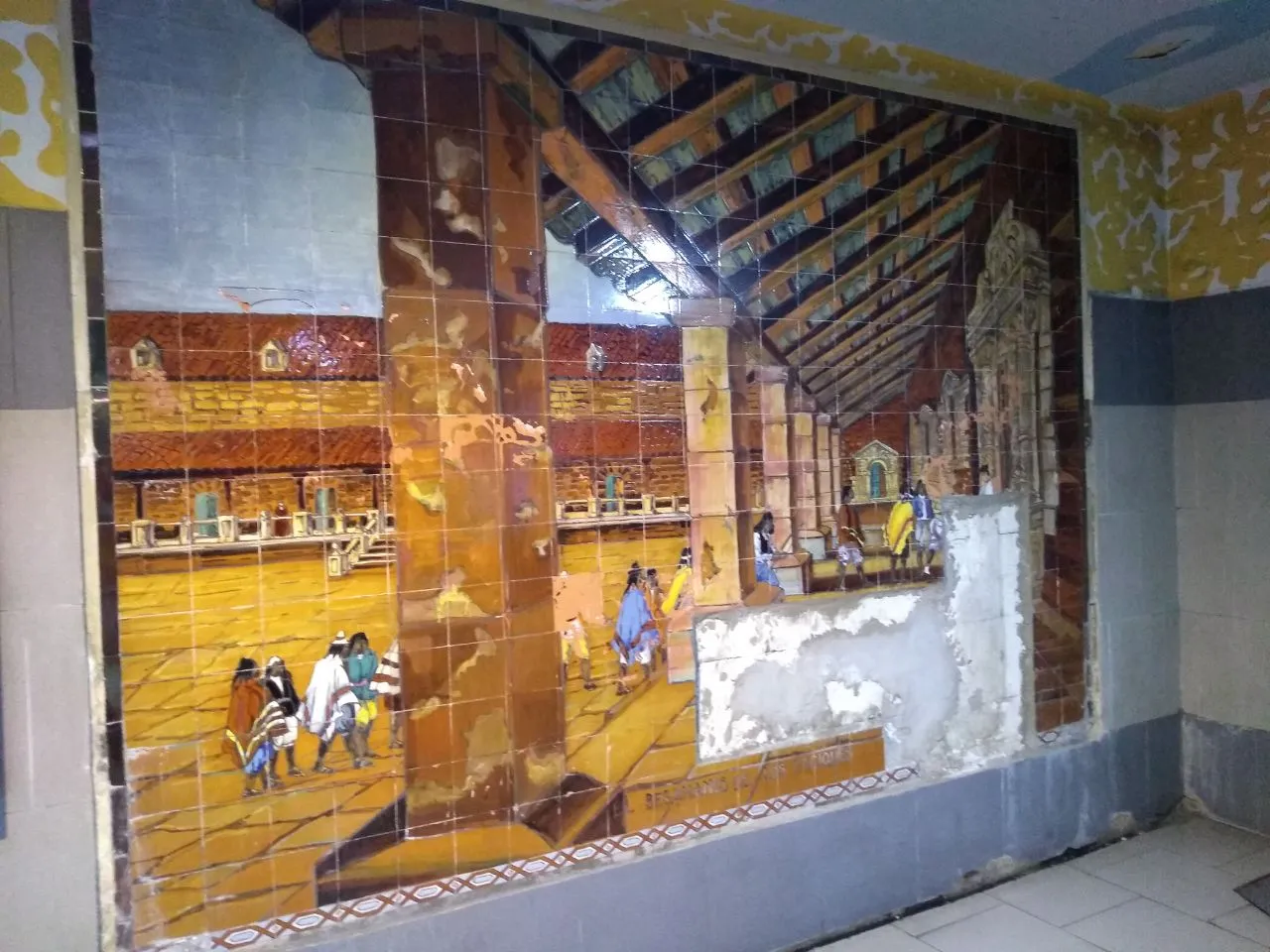
Que lindo poder conocer parte de la historia de este país a través de estas expresiones artísticas que podemos disfrutar sin tener que ir a un museo o leer grandes enciclopedias (aunque ambas cosas me encantan también)

The subway stations in Buenos Aires are, in addition to being functional, a kind of gallery, since in almost all of them we can find murals made with mosaics, paintings, sculptures, and some other very particular artistic manifestation.
Probably, the users of this means of transportation do not take the time to detail them due to the same urgency with which the system moves, however, in my case, as I use it rarely, any novelty on its platforms is fascinating to me.

The station called Plaza Italia, named after the plaza that we find just at its exit, gives us three murals made in mosaics, in which historical moments of Argentina during colonial times are represented.

I must admit, at first I thought it was a Venezuelan landscape, since the constructions in both countries during colonial times were very similar.
Earthy colors predominate, confusing the land with the buildings, which I imagine were also made with clay or adobe (a mixture of earth and clay) that was widely used in Venezuelan buildings, even until the beginning of the last century, and that provided the same durability as current materials, although its manufacturing process took much longer than that of current cement blocks.

Long corridors at the 4 corners of each house allowed for gatherings in the shade of gable roof with tiles that kept the atmosphere cool.
The clothing typical of the time takes us back to that now distant reality, but which in its time forged great personalities, after having to struggle to adapt to the climate and the political and social conditions of those years.

One of these murals depicts a collective wedding, which I imagine was common in those years, while another is called the governor's visit and the third is named the homage to the chieftain.

Unfortunately, this last one is deteriorated on one side, however, a large part of the design can still be seen, in which we see some inhabitants dressed in native ponchos showing off their colorful nature, in addition to the cobblestone streets.

How nice it is to get to know part of the history of this country through these artistic expressions that we can enjoy without having to go to a museum or read large encyclopedias (although I also love both things).
Créditos a los autores de los murales ubicados en la estacion Plaza Italia de la línea D del subte de Buenos Aires - Argentina.
Credits to the authors of the murals located in the Plaza Italia station of the D line of the subway of Buenos Aires - Argentina.
Foto/Photo by: @mamaemigrante
Edición/Edited by @mamaemigrante using canva
Tattooworld animated banner
Translated and formatted with Hive Translator by @noakmilo.
